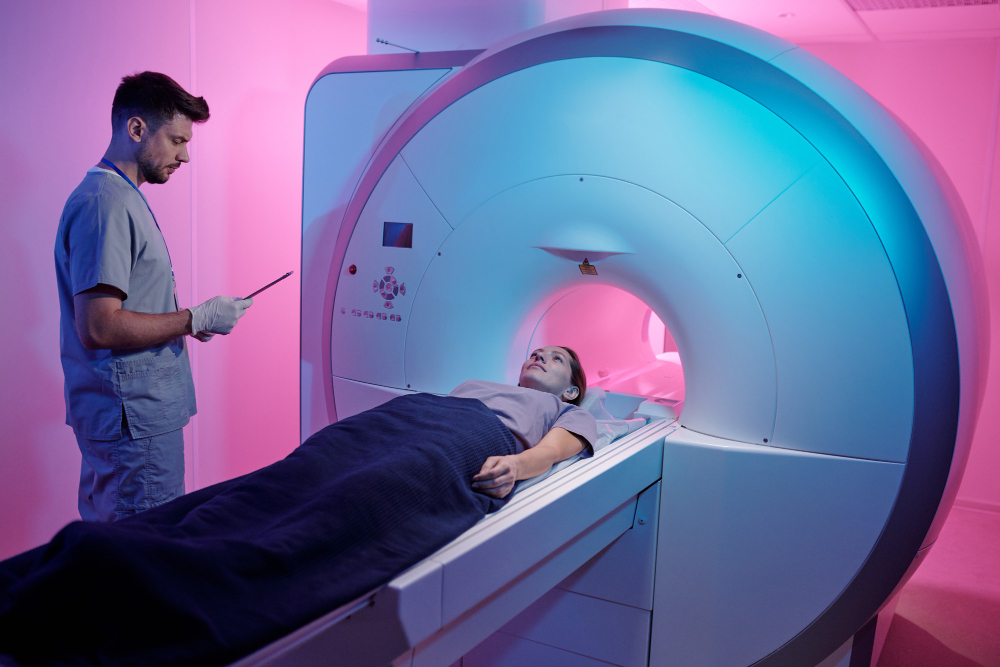Radiation Therapy Side Effects: Myths vs. Facts
2025-03-25 / RG STONE HOSPITAL / Radiation Therapy

Radiation therapy proves to be a primary and an efficient medical approach to relieve out various cancer. The extensive application of radiation therapy lead to multiple misconceptions regarding its consequences which creates pointless alarm in individuals. By understanding the true side of radiation therapy, and seperating facts from fiction, individuals will gain confidence to make the best decision for thier health.
The following blog details the normal side effects of radiation therapy while it clears up misconceptions and presents established realities about what individuals should expect.
What is Radiation Therapy?
High-energy rays together with particles form the basis of radiation therapy which works by destructing and reducing cancer cells. Eligible for targeting precise body locations, this treatment avoids causing harm to the adjacent healthy tissues during the procedure. Radiation therapy is sometimes used on its own or in combination with chemotherapy or other surgery protocols.
Common Side Effects of Radiation Therapy
The extent of the side effects of radiation treatment mainly depends on which body part receives treatment and the dose of therapy as well as patients' current health status. The body may experience standard radiation therapy side effects which include the following:
-
Fatigue
-
Skin irritation or redness
-
Hair loss in the treated area
-
Nausea
-
Loss of appetite
-
Changes in bowel or bladder habits
Medical treatment enables patients to handle most radiation therapy side effects that typically show temporary results.
Myth: External beam radiotherapy causes major adverse side effects to individuals.
Fact: The effects of radiation therapy affect each individual differently because side effects depend on a range from minor to severe conditions. The development of modern medical technology allows healthcare providers to deliver radiation treatment with higher precision to minimize damage among healthy tissues. The typical side effects from treatment generally remain minor and fade away after the therepy is over.
Myth: Radiotherapy treatments can lead tp temporary radioactivity within the individual's body.
Fact: The most common external beam radiation technique exists without having a radioactive effect on individuals. During each session the radiation activates precisely at the treatment site without remaining in the body afterward. Your doctor will provide detailed information about short-lived radiation precautions associated with internal treatment techniques (brachytherapy).
Myth: Side ffects of adiation are the same for everyone.
Fact: Side effectsof radiation therapy are different for each individual. The combination of treatment ,cancer type and location along with medical condition and radiation dosage determine the intensity of side effects. Different individuals will display varied ranges of side effects from radiation therapy including those experiencing minimal symptoms to those individuals showing substantial symptoms.
Myth: Radiation therapy results in permanent hair loss.
Fact: The treated area is the only place where hair loss is triggered. But this condition generally resolves after completion of treatment. When radiations are given to the head area, temporary scalp hair elimination but individuals usually recover their hairsloss several months after completing their therapy. Radiation therapies at other body areas will not cause hair loss.
Myth: Radiation Therapy Damages the Heart and Lungs Permanently
Fact: Special planning of radiation therapy aims to protect surrounding healthy tissues from unwanted harm. Intensity-Modulated Radiation Therapy (IMRT) and Proton Therapy serve as modern techniques which enable doctors to deliver exact dosage with reduced dangers to other critical organs.
Managing Side Effects of Radiation Therapy
Several options exist to manage the side effects of radiation therapy even though sometimes they might be difficult to handle.
-
Fatigue: Prioritize sleep, while consuming a balanced diet accompanied with light physical exercises to increase your energy levels.
-
Skin Irritation: Apply non-fragrant skin care products and protect the treated area from direct sunlight.
-
Nausea: Consume small portions of meals throughout the day while consuming plenty of water. Anti-nausea medications are probably among the medications your doctor will provide for treating nausea.
-
Appetite Loss: When undergoing cancer treatment individuals should eat foods packed with nutrients while receiving guidance from a dietitian if needed.
-
Emotional Support: Accepting the emotional aspect of Cancer treatment can be made easier through participation in support groups and regular counseling.
Long-Term Side Effects of Radiation
Side effects tend to be temporary though some serious ones might continue to appear or develop even after numerous months or years of treatment. These may include:
-
Individuals might experience variations of skin texture and color changes.
-
Fertility issues
-
Swelling from fluid accumulation in the body known as Lymphedema appear as a result of treatment.
-
Secondary cancers (rare)
Continous monitoring by your physician through regular check-ups allows the individual to manage the sustained side effects of radiation treatment.
Conclusion
Radiation therapy plays a vital role in cancer treatment, yet it is often misunderstood leading to unnecessary fear and anxiety. Knowledge about radiation therapy, its side effects along with a proper distinction between reality and myths, enables individuals to have faith in the treatment. The latest medical developments strive to enhance radiation therapy safety with improved effectiveness while most side effects remain both manageable and temporary.
Consult your healthcare provider whenever undergoing radiation therapy because they will provide individualized information and support. Appropriate care combined with sufficient knowledge enables individuals to approach their recovery process optimistically while developing personal strength.
Categories
Hernia Repair
Appendicitis
Piles
Urological Treatment
Hernia treatment
Enlarged Prostate (BPH)
Gall Bladder Stone
Urinary / Kidney Stone
Vitamins
Indian Health Care System
Exercise
Obesity
Female Urinary Incontinence
Single Incision Laparoscopic Surgery (SILS)
Kidney Cancer
Bladder Cancer
Ovarian cancer
Nephrology
Bariatric Surgery
Kidney Function Test
Female Urology
Radiation Therapy
Alcoholic Fatty Liver
Liver disease
Gastroenterology
Kidney Disease

